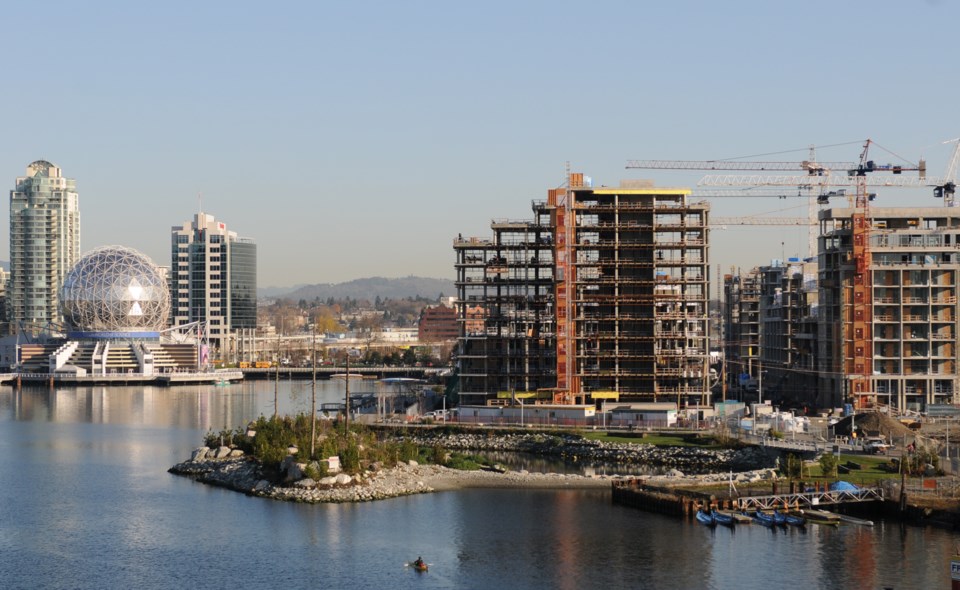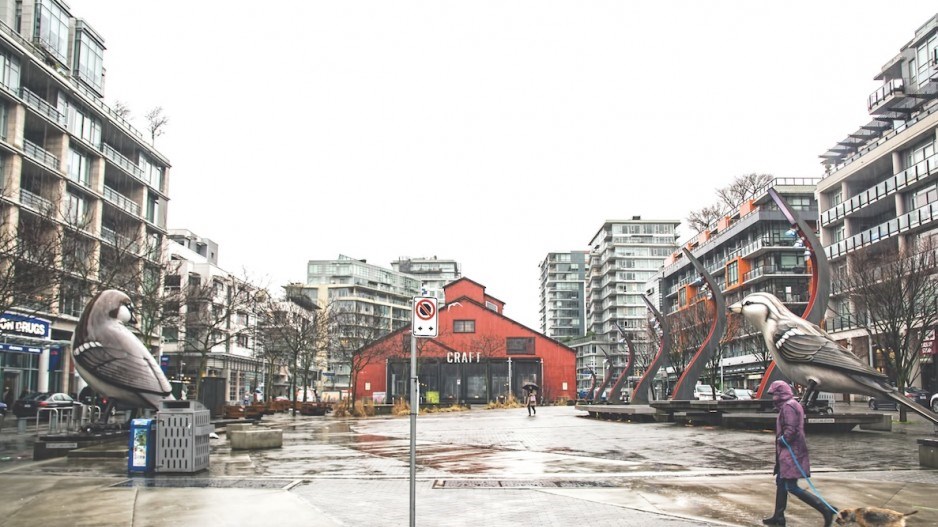Anyone visiting Vancouver’s Olympic Village today is likely to see cyclists riding along the seawall, residents walking dogs, shoppers leaving stores with purchases and while others sit outside on benches or at the Terra Breads café, enjoying coffees or sandwiches.
Go back a decade and the site was anything but the bustling, successful neighbourhood that it is today.
Things were so bad that soon after the 2010 Winter Olympic Games ended, the site’s marketer, Rennie Marketing Systems executive director Bob Rennie, called the site a “ghost town.”
The City of Vancouver’s stance is that the project turned out to be a good investment, netting it a $70 million profit after it retired a $690 million debt, although critics question the city’s math and whether it included all costs.
Indeed, for much of the lead-up to the 2010 Olympics there was incessant hand-wringing as dire prophesies about financial losses were widely debated, and political opponents sparred about whether the city should have provided a $100 million loan guarantee that ensured that developer Millennium Development Group could continue construction through the 2008-09 global economic downturn.
“There was no backup plan,” said John Furlong, who was CEO of the Vancouver Organizing Committee for the 2010 Olympic and Paralympic Winter Games, or VANOC. “The city had an obligation to deliver the village to VANOC by a certain date. We never had any doubt that it would be delivered.”
It is unclear what penalties the International Olympic Committee (IOC) might have levied against the city, or VANOC, had the village not been built. Furlong said that he thinks it would have been “impractical” for the IOC to levy any penalty.
“The schedule was always maintained, and the city was well aware of what their obligations were, and they delivered against it as we required them to do,” he said.
The biggest controversy, however, came in February 2009, when the city took on $630 million in debt by buying the financially crumbling Fortress Investment Group’s loan to Millennium to ensure the project would be completed in time for the Olympics.
That transaction included buying an additional $60 million debt that the city would owe to itself, which is why the total debt that the city took on was pinned at $690 million, former city manager Penny Ballem explained to Business in Vancouver in 2014.
The city then spent about $10 million in miscellaneous expenses and generated a total of about $770 million in proceeds from the project.
That money came in the form of:
- about $200 million from pre-sales;
- $411 million from condominium and commercial property sales;
- about $68 million in proceeds from other Millennium properties that were sold after the project was put into receivership; and
- $91 million from Aquilini Investment Group (AIG), which bought 67 homes.
AIG principal Francesco Aquilini had wanted to buy all 450 unsold units at the 1,108-unit Olympic Village, but he told BIV in February 2011 that the price was too high.
“There’s a gap there,” Aquilini said. “Anybody who would buy that project and take it on would have to take a significant amount of risk.”
He eventually bought 67 homes in a bulk deal. He told BIV in January that his company has resold all but five or six of those units.
Debate over exactly how well the city fared financially from the village remains.
Longtime real estate watcher, developer and columnist Michael Geller said that the city did not fully account for costs at the Olympic Village.
For one thing, he said, the city is not taking into account at least $50 million in losses related to social housing on site. Second, the city’s math fails to include Millennium’s unpaid mortgage on the land.
Millennium agreed in 2006 to pay the city $193 million to buy land to build the Olympic Village, but it paid only a $30 million down payment.
Marketing a “ghost town”
In April 2006, when Vancouver city council approved Millennium Development’s $193 million bid to buy city-owned land and build the Olympic Village, real estate marketing whiz Rennie was part of the package.
Had the city instead approved lower bids from Concord Pacific or Wall Financial, Rennie would likely not have been put in charge of marketing the site, he told BIV.
Rennie had a solid relationship with Millennium principals Peter Malek and Shahram Malekyazdi from having worked with them on previous successful projects.
He was widely known in town as the “condo king,” partly because his team at Rennie Marketing Systems had been able to sell out some projects in one day of pre-sales.
So some may have taken Rennie seriously when he joked in 2007 that he would sell out the first phase of sales at the Olympic Village all in one day.
“That was tongue-in-cheek,” Rennie told BIV in January.
He launched the first phase of pre-sales at the Olympic Village in October 2007 when 255 of 302 available units sold. He launched the second release of Olympic Village units in early 2008, but interest in the site had faded. Rennie estimated that less than 30 per cent of around 150 units sold, bringing the total sold to around 287. Overall, the project included 737 condominiums and townhouses. Other units were rental homes or co-op housing.
Once the financial meltdown came later in 2008, sales ground to an abrupt halt, yet construction continued in order to meet the deadline of October 25, 2009, when the project had to be handed over to VANOC, to in turn be handed over to the IOC.

Other projects at the time, such as Holborn Group’s West Georgia project to build a tower with a Ritz-Carlton hotel, for example, were put on hold and deposits were returned to condo buyers.
Up until that abrupt halt, however, construction in Vancouver was sizzling, as developers were gearing up to capitalize on the global attention the Olympics would provide.
“There was pressure of getting tradespeople, the pressure of getting finishing materials,” remembered Rennie.
Unlike other projects, the Olympic Village units were to house Olympic athletes before being passed on to buyers. Those athletes needed beds but not kitchens, so crews blocked off all the kitchens with fibreboard.
When VANOC handed the project back to the city on May 15, 2010, crews had to “unpack” the suites, and re-expose the kitchens, Rennie said. He then hired 10 different interior designers to create distinctive interior designs for display suites.
“There were unsold suites that became display homes, which is unusual for Vancouver, because here everything takes place in a pre-sale,” Rennie said.
Sales, however, remained scarce.
Millennium failed to make full mortgage payments, and EY stepped in as the project went into receivership in November 2010.
EY, Rennie and Ballem would then meet each week to discuss sales strategies.
News stories highlighted construction deficiencies, as some buyers tried to get out of contracts by pointing out that the units were not delivered as expected.
This frustrated Rennie, who viewed any glitches as minor.
“On TV, a toilet leaked,” he said. “That ran for three minutes and everybody thought that the whole village was like that.”
Outside of slashing prices an average of about 30 per cent and tossing in perks such as bicycles, roller blades and kayaks, Rennie decided that a good strategy would be to call the project a ghost town.
“The receiver and the city weren’t happy but I had to give everybody something to measure,” Rennie said. “The measurement would be occupancy.”
Media started tracking occupancy numbers and Rennie released statistics regularly to show increases.
Stores such as London Drugs pushed off opening, but as soon as Terra Breads opened, litter bins started to fill with empty coffee cups — a sure sign of life.
More people moved in. The economy improved, prompting prices to rise.
Even critics such as Geller are pleased to see the village community take shape.
“We often say real estate is all about location, location, location, but what the Olympic Village has taught some of us is that it really is all about timing, timing, timing,” he said. “I said that one day it will be a lively, successful community, and it is a lively, successful community.”



